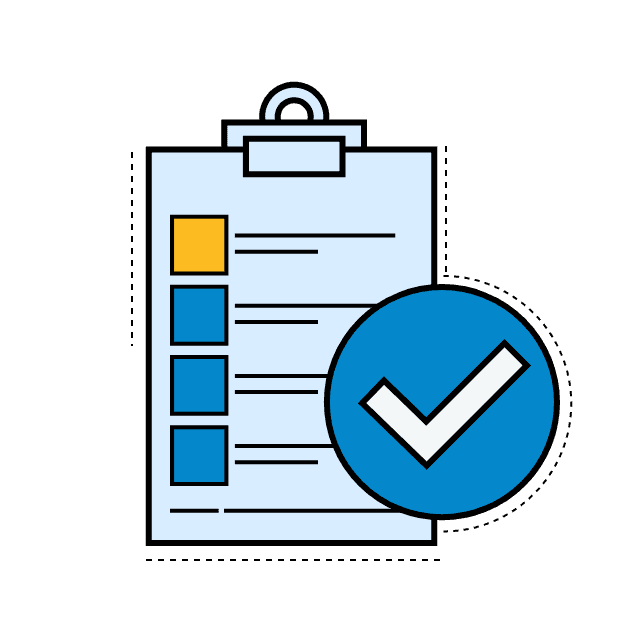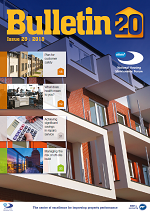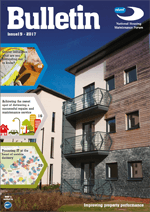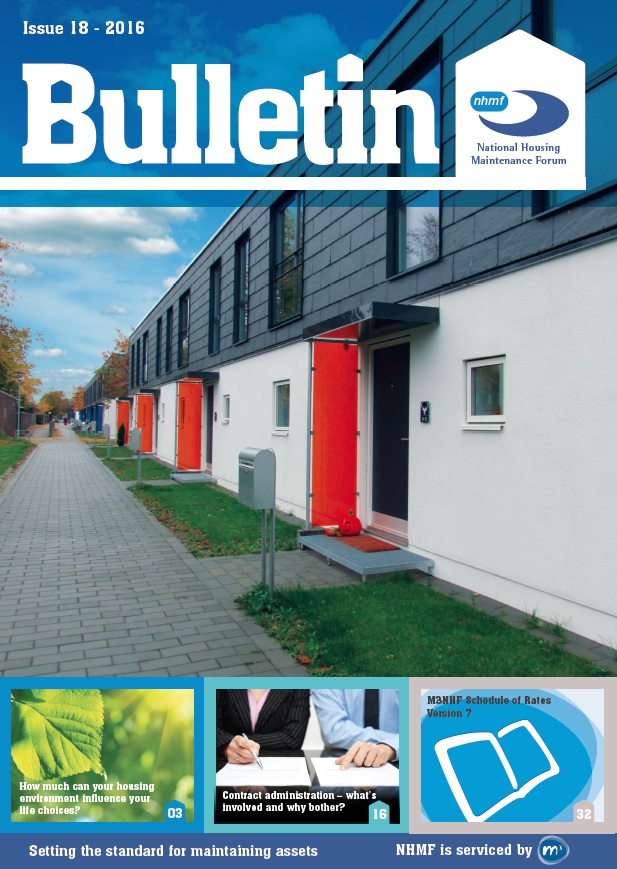NHMF best practice
These two new best practice sections will help social landlords to maintain quality homes in an increasingly challenging economic environment. The Compliance Section has a set of topical guides summarising social landlords’ responsibilities for meeting essential statutory health and safety requirements and explain how to do this economically and efficiently. The Fuel Saving Section explains how to include a fuel saving strategy as a key aspect of an organisation’s business plan. The Guide then sets out how to develop a practical improvement strategy as an integral part of the asset management programme and how to successfully deliver the improvements and manage the risks. There are also best practice training courses which relate to this guide.
Communal - Internal
Common parts of blocks of flats, such as entrance lobbies and stairwells
Landlords have a general duty of care for maintaining and cleaning these areas. Landlords should know what repairs are required in communal areas since they could be liable for any accidents caused by any defects, rather than rely on residents reporting them as is the case in the environs of their own homes. All cleaning materials should be COSHH approved and supported by written certification (see below).
In addition, landlords need to carry out and act on:
-
fire risk assessments to ensure that means of escape is maintained (see Fire safety).
-
asbestos surveys, management plans and re-inspections to ensure any risk of exposure to asbestos is appropriately managed (see Asbestos).
All cleaning materials should be COSHH approved and supported by written certification. In addition, landlords need to ensure that operatives comply with The Work at Height Regulations 2005 for both external cleaning of windows and for those in common parts. HSE has published guidance to explain organisations’ responsibilities and to help them comply with these regulations.
See Asbestos, Electrical safety, Gas safety and Fire safety.
See Asbestos, Electrical safety and Fire safety.
Periodic inspections and safety checks need to be carried out at frequencies based on the risk assessment and manufacturers’ information. See Electrical safety.
In addition to maintaining Electrical and Fire safety, landlords must test, service, maintain, certify and report on all fire warning systems fully in accordance with the provisions of British Standard 5839: 2013 as appropriate at each property.
Landlords must test, service, maintain, certify and report on all fire fighting installations, equipment and/or appliances at specified intervals fully in accordance with the provisions of:
-
BS 5306-1:2006 Code of practice for fire extinguishing installations and equipment on premises. Hose reels and foam inlets;
-
BS 5306-3:2009 ‘Fire extinguishing installations and equipment on premises. Commissioning and maintenance of portable fire extinguishers. Code of practice’ as appropriate at each property.
-
Any sprinkler systems are to be maintained in accordance with BS EN 12845:2004+A2:2009 Fixed fire fighting systems. Automatic sprinkler systems. Design, installation and maintenance.
In addition to maintaining Electrical safety, landlords must test, service, maintain, and report on all existing emergency lighting fully in accordance with the provisions of BS 5266-1:2011 Emergency lighting: Code of practice for the emergency escape lighting of premises.
Systems should be maintained as part of all electrical installations. See Fire safety and Electrical safety.
A range of information leaflets are available at HSE guidance on employers’ responsibilities for the safe installation, operation and maintenance of catering equipment. Risk assessments and training of staff are important health and safety aspects in addition to the requirements for gas-fired equipment, electrical safety and ventilation systems. Ventilation systems need to be designed and maintained to ensure fire.
HSE’s leaflet Gas safety in catering and hospitality advises on the legal requirements and British Standards for installing, operating and maintaining gas-fired catering equipment. It also advises on ensuring adequate ventilation, assessing risks and training staff.
See also Gas safety and Electrical safety.
As well as maintaining the equipment, communal/commercial kitchens should be cleaned in compliance with:
-
The Food Safety Act 1990
-
The Food Safety (General Hygiene) Regulations 1995
-
Control of Substances Hazardous to Health (COSHH) Regulations 2002
-
The Hazard Analysis and Critical Point (HACCP) System
-
REACH documentation
Regulation 8 of the Private Water Supplies Regulations 2009 states that ‘Where water is supplied by a water undertaker or licensed water supplier and is then further distributed by a person other than a water undertaker or licensed water supplier the monitoring must be carried out on the basis of the risk assessment.’
Landlords, who have homes where water is not supplied directly to the residents by the water undertaker (i.e. distribute and pump water to the homes within a building) need to comply with this regulation. Any risk assessments should include how to deal with any interruption to or failure of water pumps.
Where local exhaust ventilation systems are installed, they should be maintained in accordance with:
-
HSG 258: An introduction to on Local Exhaust Ventilation published by the Health and Safety Executive.
-
HSENI publish guidance and also refer to HSG258.
-
Working with substances hazardous to health COSHH Leaflet INDG136(rev4)
CIBSE TW17 also provides guidance on cleaning ductwork to air conditioning systems.
Landlords need to manage underground car parking in a similar way to refuse and recycling areas. They also have a responsibility to ensure that adequate ventilation is maintained.




